Critics (including this one) casually refer to John Wilson’s Sinfonia of London as an all-star outfit, an army made up of generals. This week I was able to see, and hear, exactly what that means. A few days ago, in Scotland, I marvelled at flautist Adam Walker’s agility and versatility in his outstanding performances with the Kaleidoscope Chamber Collective at the Lammermuir Festival. Yesterday, on the penultimate night of the Proms, there he was again with the Sinfonia, a stand-out soloist in key passages from Strauss’s tone-poem Don Juan and, above all, in the complete version, the “choreographic symphony”, of Ravel’s Daphnis and Chloe.
In this Prom composed of works inspired by lovers and by love, both the Ravel – of which they made a superb landmark recording – and the Strauss felt like secure home ground for Wilson and his regiment of musical luminaries. Daphnis and Chloe benefited further from the Sinfonia’s own chorus: another ad hoc gathering of top singers, led by choral megastar Simon Halsey. Both pieces sounded, predictably but thrillingly, splendid, with Wilson’s pinpoint command of the Ravel – in its tiniest rhythmic and colouristic ripples as much as its tremendous tidal surges of sound – a thing of wonder and beauty.
However, I was especially keen to hear how the Sinfonia tackled the less familiar filling in this sandwich of sonic spectacles. Leonard Bernstein’s Serenade, written in 1954 for Isaac Stern, ranks as an almost-violin concerto that takes thematic cues for its five movements from the sections of Plato’s Symposium. So, soon after his marriage to Felicia Montealegre, Bernstein wrote this impassioned work prompted by a canonical celebration of same-sex love: talk about hiding in plain sight.  James Ehnes was the soloist (pictured above), and the eminent Canadian – with, as he later told us, a celebrity Stradivarius under his chin – gave a nuanced, heartfelt and almost persuasive account of a work that (to my ears) misfires as often as it ignites. Scored for string orchestra and a complex array of percussion parts – all, from bells to blocks to drums, enjoyably mastered by the Sinfonia’s formidable battery – the Serenade sometimes drifts, hesitates and meanders, p[articularly in its solo part. The relationship between each section and the different aspects of the Platonic dialogue on love remains hazy and erratic – as usual with music that aims to channel big ideas.
James Ehnes was the soloist (pictured above), and the eminent Canadian – with, as he later told us, a celebrity Stradivarius under his chin – gave a nuanced, heartfelt and almost persuasive account of a work that (to my ears) misfires as often as it ignites. Scored for string orchestra and a complex array of percussion parts – all, from bells to blocks to drums, enjoyably mastered by the Sinfonia’s formidable battery – the Serenade sometimes drifts, hesitates and meanders, p[articularly in its solo part. The relationship between each section and the different aspects of the Platonic dialogue on love remains hazy and erratic – as usual with music that aims to channel big ideas.
From time to time the score starts to break out into true Bernstein brilliance – I heard echoes of the great On the Waterfront suite, of the Prelude, Fugue and Riffs, and of course of West Side Story still to come – but then a certain repetitive solemnity cramps his style. Not invariably, though: the “Agathon” adagio blazes into emotional and melodic life, its violin line yearning and tender against a rich Mahlerian string background.
The final section’s questing dialogue between Socrates and Alcibiades (with Jonathan Aasgaard heading a rounded and polished cello squad) leads into a rhythmically surprising and intriguing rondo. Still, Ehnes was possibly unwise to pick as his encore, and to play so compellingly, the final movement of Bach’s third violin sonata. But then that piece would have eclipsed 99.9 per cent of all music ever written.
Don Juan had shown us that Wilson’s Sinfonia (pictured below) can deliver much more than orchestral glitter and swagger. He reined in the potential for bombast in the amorous journey of hero (or antihero), with a graceful spring and verve to the strings and several stylish, full-bodied wind excursions: Walker’s flute, of course, but also star oboist Tom Blomfield. And Christopher Parkes’s band of horns – in solitary splendour, sited far distant from the other brass – stepped up with imposing but refined iterations of the arch-seducer’s signature theme.  For the Ravel, with this huge force of decorated officers in from of him, Wilson had to prove his unflagging attention to fine detail as well as strategic mastery. That he did, in a performance that, for all the maximalist grandeur of the score, made you feel, and almost see, the ballet unfold as it originally did with Fokine’s revolutionary choreography – and Nijinsky as the swain Daphnis – in Paris in 1912. Wilson never let us forget that this is music for dancing: from the Nocturne and the War Dance to the “Pantomime”, Ravel’s ever-shifting rhythms minutely track the moods of the Greek pastoral romance. This ultra-big band proved impressively light on its feet.
For the Ravel, with this huge force of decorated officers in from of him, Wilson had to prove his unflagging attention to fine detail as well as strategic mastery. That he did, in a performance that, for all the maximalist grandeur of the score, made you feel, and almost see, the ballet unfold as it originally did with Fokine’s revolutionary choreography – and Nijinsky as the swain Daphnis – in Paris in 1912. Wilson never let us forget that this is music for dancing: from the Nocturne and the War Dance to the “Pantomime”, Ravel’s ever-shifting rhythms minutely track the moods of the Greek pastoral romance. This ultra-big band proved impressively light on its feet.
Wilson’s orchestral textures were lush, dense and shamelessly sensuous, with even (especially?) the trombones finding an erotic frisson in their parts. The mob-handed percussion, from wind machine (“aeoliphone”) to tam-tam and huge bass drum, struck decisive blows at every point. As for the chorus, proudly at the centre of proceedings (pictured below), its tight togetherness made the mystical scat-singing of its vocalise into an instrumental role.  The great climactic moments – above all the ecstatic sunrise that opens the third part – washed across the hall with a majesty that still left space for distinctive solo woodwind flights in the birdsong that follows that blaze of glory. With the “general dance”, we scampered, lurched and frolicked to a finale of deftly controlled savagery. After this riot of sensual intensity, even an encore of the “Panorama ” from Tchaikovsky’s Sleeping Beauty – another love-soaked ballet score – sounded a trifle austere.
The great climactic moments – above all the ecstatic sunrise that opens the third part – washed across the hall with a majesty that still left space for distinctive solo woodwind flights in the birdsong that follows that blaze of glory. With the “general dance”, we scampered, lurched and frolicked to a finale of deftly controlled savagery. After this riot of sensual intensity, even an encore of the “Panorama ” from Tchaikovsky’s Sleeping Beauty – another love-soaked ballet score – sounded a trifle austere.

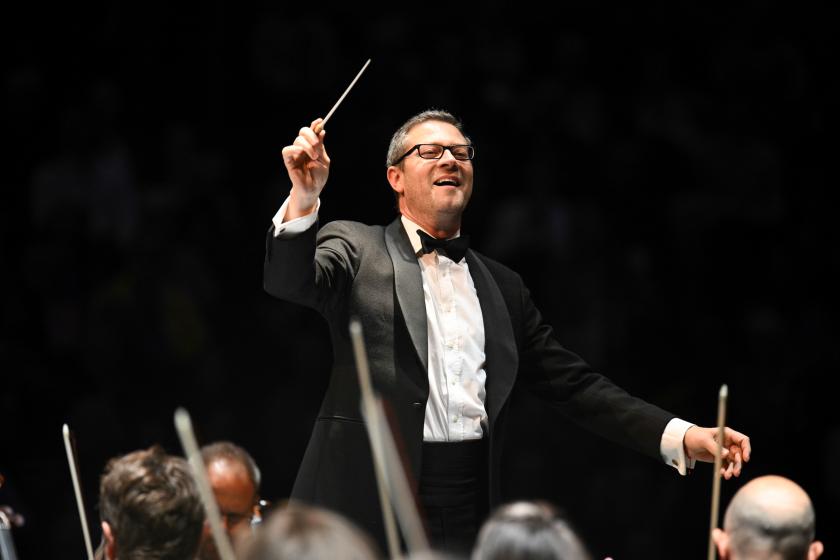



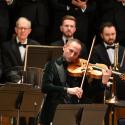

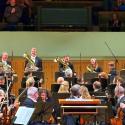
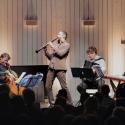



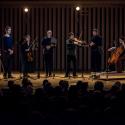
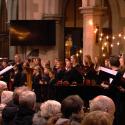

Add comment